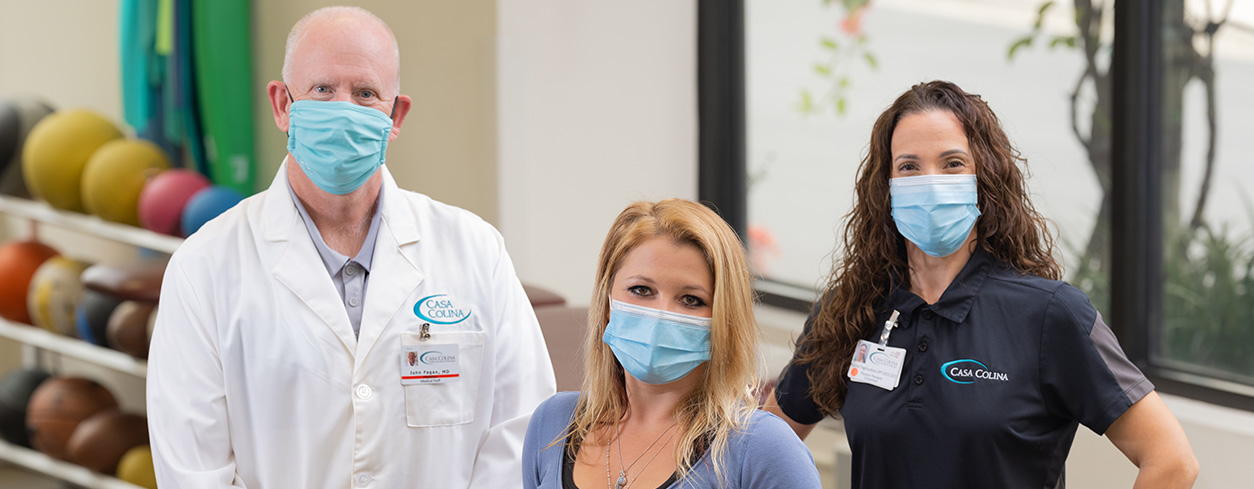Helping Patients Feel Heard


Ever since she was a girl, Lara Ludwinski sensed something off with her body. Her ability to bend joints into weird positions was a novelty in high school. But with the injuries that come with age—a rolled ankle here, a hyperextended shoulder there—she realized her body was not really recovering. Pain persisted. Ligaments felt stretched. For years, she struggled to articulate what she was feeling to family, friends, and doctors.
What Lara later discovered is that she has a little-known connective tissue disorder called Hypermobile Ehlers-Danlos Syndrome (EDS). The most common symptom? Joints moving easily out of place. About 50% of those with EDS experience no other symptoms and simply consider themselves “double jointed.” But not Lara.
“I felt like a puppet,” she says. “It’s like you’re in a body, but nothing is held together. I thought this was normal—always thinking about how to take a step so your hip doesn’t pop out.”
For many like Lara, EDS presents with debilitating symptoms. These can include pain, fatigue, nausea, gastrointestinal issues, and cognitive problems. Those with EDS often experience anxiety and depression, receiving multiple referrals to mental health services after repeat diagnostic testing is inconclusive. Left undiagnosed, EDS can cause significant dysfunction.
“It was just pain and discomfort,” says the 31-yearold former veterinary technician, who burned out on the job as her health worsened. “You’re always tense, never able to relax.”
Throughout her 20s, Lara found her relationships, self-esteem, and productivity adversely impacted by the yet-to-be-diagnosed condition.
“You feel like a burden,” she says. “You have to keep constantly explaining to people why you can’t do things.”
Eventually, her symptoms became unmanageable.
For an outdoors enthusiast like Lara, the increased risk of injury from EDS is a genuine concern. The spirited Santa Monica native always felt a kinship with nature, whether surfing the Pacific Coast, skateboarding the Venice Beach boardwalk, or hiking the Santa Monica Mountains. Over time, though, the uncertainties of her condition prompted her to stop some activities.
“I would go into the ocean and get scared, thinking, I don’t know if I can handle this,” she says. As her strength and mobility declined, doctors couldn’t explain why. After exhaustive internet research, Lara and her mother found a condition called Ehlers-Danlos. Lara related immediately.
The lack of specialized EDS care in Southern California quickly led her to John Fagan, MD, a Casa Colina physician with more than a decade of experience treating EDS. For Dr. Fagan, helping those with EDS has been a personal mission: His daughter has struggled mightily with the condition, giving him firsthand knowledge of the adverse impact it can have on quality of life. Over time, as Dr. Fagan encountered more and more EDS cases in his family practice, he recognized the need for a local program.
With a range of medical specialists, renowned therapy teams, medical-surgical services, and radiology all located on its 20-acre Pomona campus, Casa Colina checked all the boxes needed to create a multidisciplinary program. He diagnosed Lara in September 2019. She began treatment shortly after.
“These patients have multiple specialty needs, the most important being physical therapy,” says Dr. Fagan. In addition to offering therapists with orthopedic specialty certifications who understand how to treat EDS patients, Casa Colina is home to medical experts who treat EDS co-morbidities, including physicians specializing in pain management, neurology, gastroenterology, and cardiology.
Lara receives weekly physical therapy at Casa Colina’s Outpatient Center, and it’s helping her physically and mentally. Working with therapist Rachel Yaghoubian, Lara has managed to improve strength and stability in both her core and extremities. Recognizing the need to tailor a specialized plan to this unique condition, Yaghoubian employs massage techniques, isometric holds, and kinesiology tape to help Lara control pain flare-ups and re-align her body.
It’s been so helpful, in fact, that Lara is willing to come from Santa Monica twice weekly—nearly 50 miles each way—with the help of a family member to drive her. The treatment is keeping Lara active in her dog-walking and pet care business, which maintains her connection to animals and nature. On a typical day, Lara enjoys tending her vegetable and flower gardens, caring for her own pets, and performing therapy exercises with the goal of returning to the more strenuous activities that really fuel her.
For many with EDS, simply getting a diagnosis changes their whole outlook.
“It’s unbelievable. You give them this information and they just start crying,” says Dr. Fagan, who works to raise EDS awareness and literacy through presentations to physicians. “What I tell other doctors is that the bond you form with that patient is irrevocable, because you listened to them. They need an advocate on their side.”
In addition to continuing therapy, Lara would like to get involved with a newly formed peer support group for individuals with EDS at Casa Colina. She has a message for those who are still suffering alone.
“Don’t give up,” she says. “If something’s wrong, and you’re not comfortable with the care you’re given, keep digging. You know your own body.”
###
